

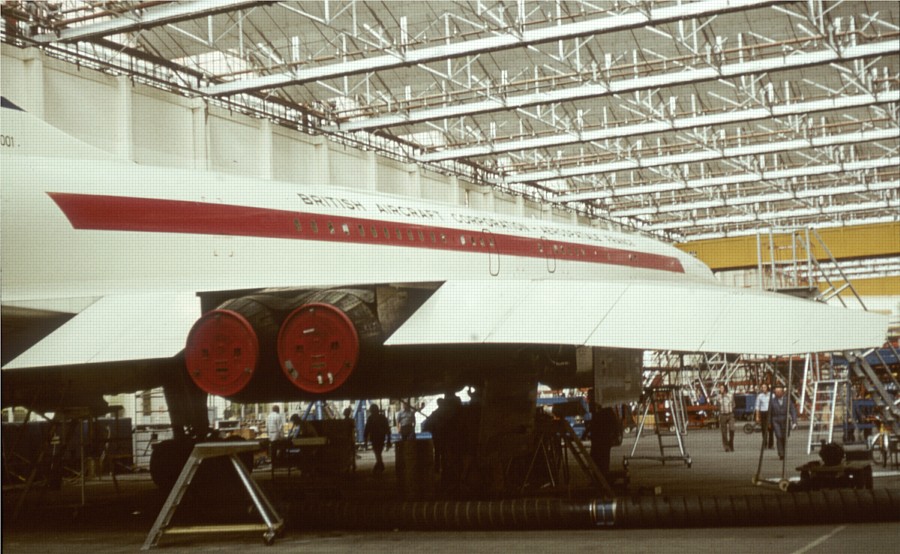
My first view of 001 in the Concorde Hall in the factory. |

Is it working OK? This photo shows the QMC system being tested outside the factory building. Left-to-right the people are: Jim Lesurf, Jim Hall (RSRE), Tony Marston. |
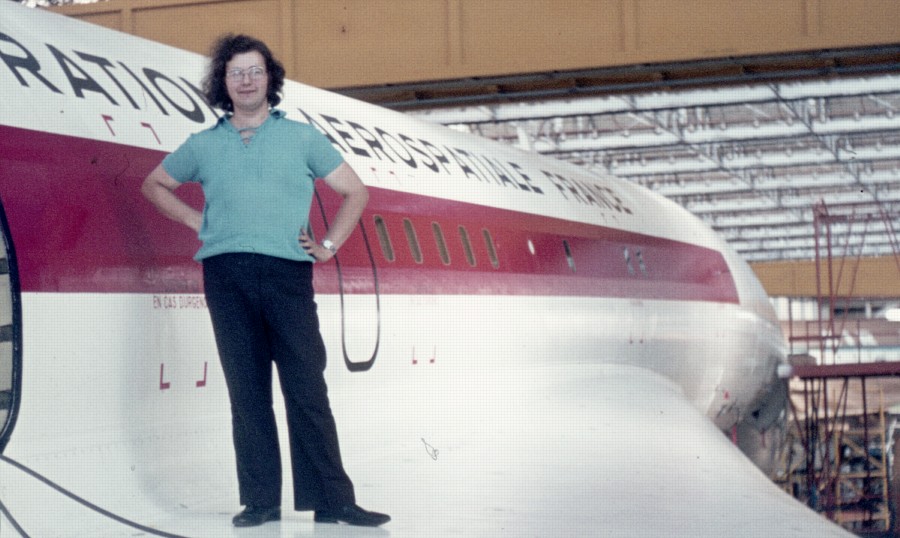
Standing on the wing! |
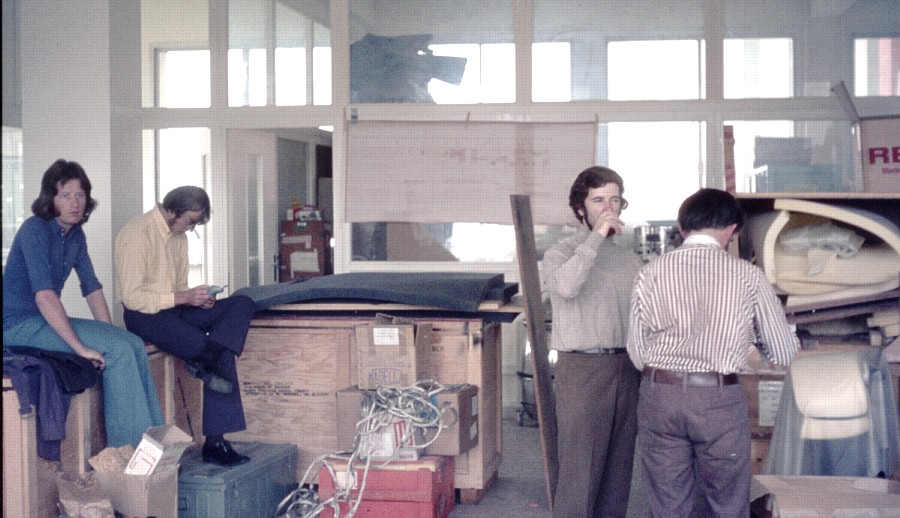
Researchers in the room QMC and NPL used as a Lab at the factory. Jim Birch on the left, John Beckman and Tony Marston from QMC on the right. |

André Turcat, the chief test pilot for 001, being interviewed at Toulouse. For some reason I tend to think of this picture as being ‘A study in noses’... |
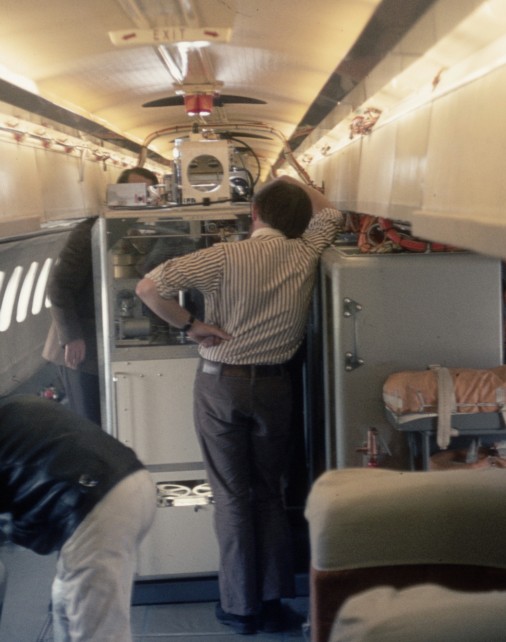
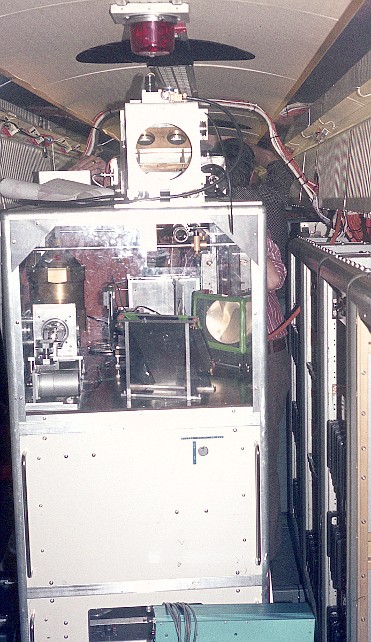
The QMC instrument installed in the cabin of Concorde 001.
Note the dark opening in the roof which holds the quartz window of the cabin. | |||
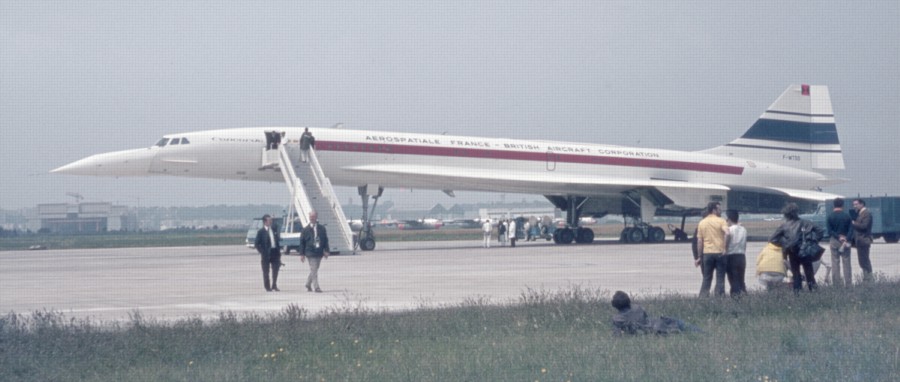
Concorde 001 at Toulouse just before one of the test flights. |
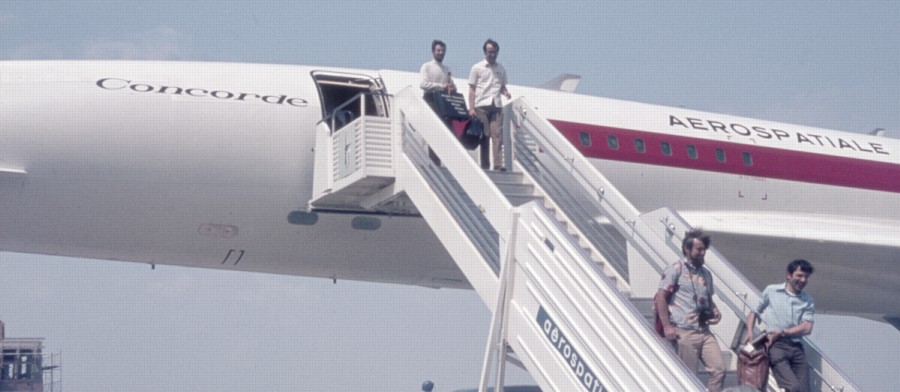
After the test. Happy researchers disembarking. |
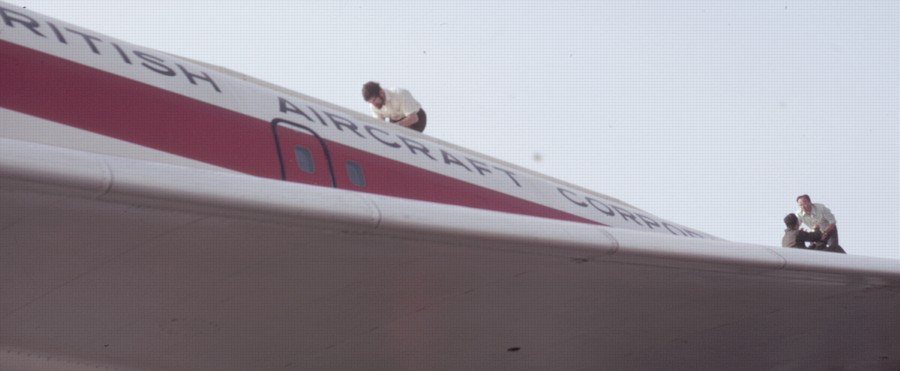
Researchers cleaning the observation windows in the cabin roof just prior to takeoff. John Beckman on the left. I think one of the people on the right is Don Liebenberg of the LASL group. |
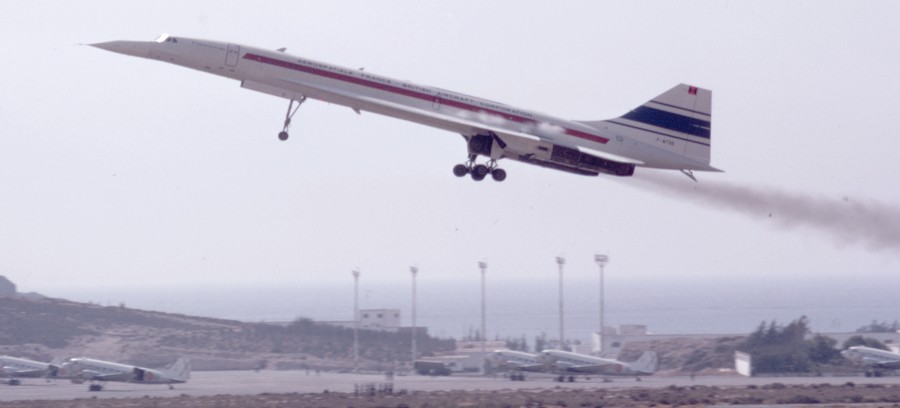
Concorde 001 taking off on 30th June 1973 for the eclipse flight. |
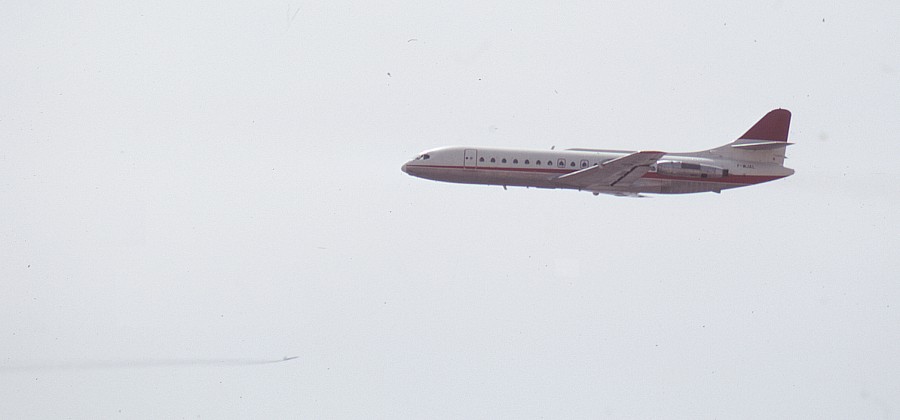
The Caravelle support plane taking off to follow 001 to Tchad. If you look carefully at the bottom-left part of the photo you can just see Concorde after it has turned to fly towards the eclipse track. |